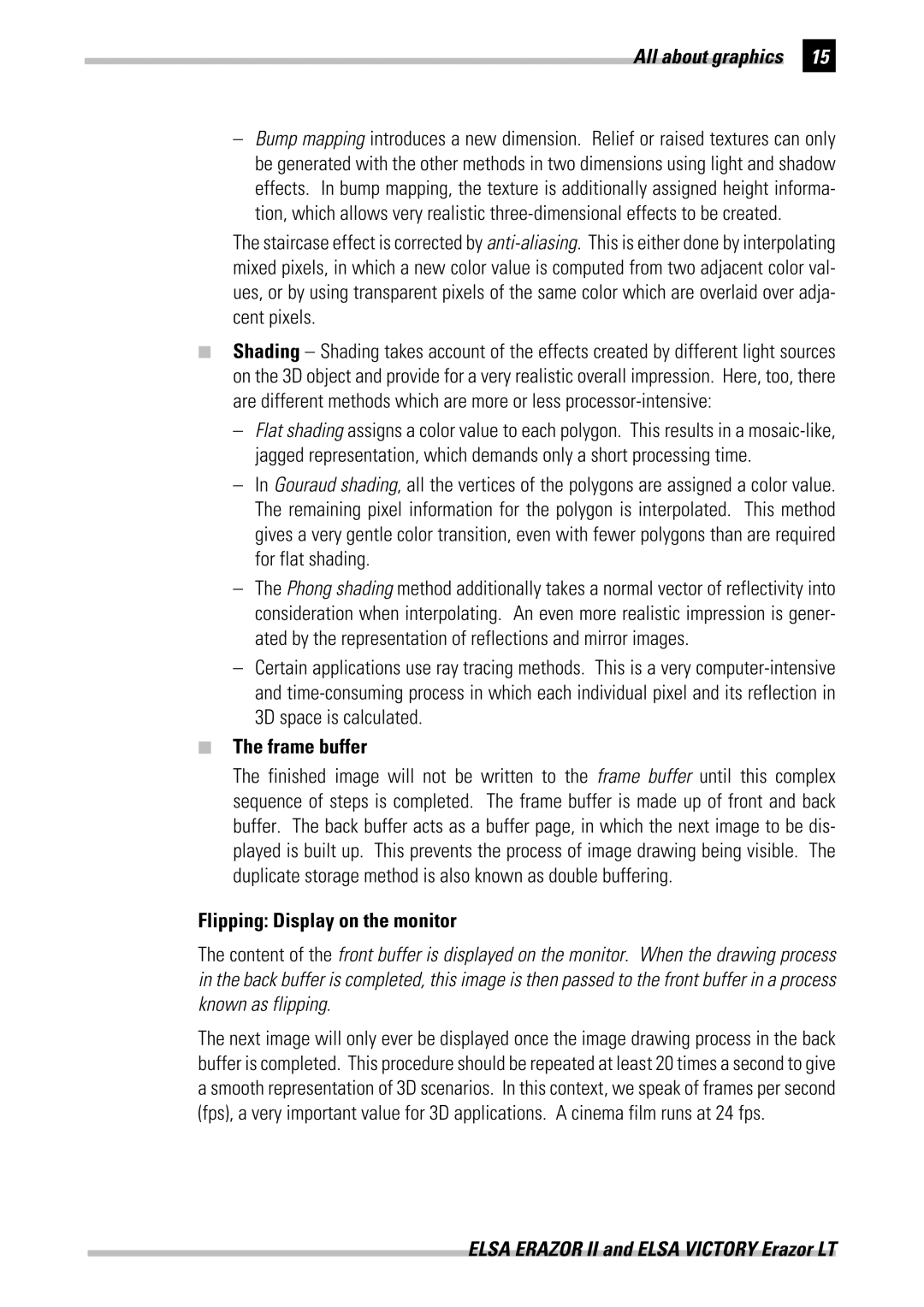
All about graphics 15
–Bump mapping introduces a new dimension. Relief or raised textures can only be generated with the other methods in two dimensions using light and shadow effects. In bump mapping, the texture is additionally assigned height informa- tion, which allows very realistic
The staircase effect is corrected by
KShading – Shading takes account of the effects created by different light sources on the 3D object and provide for a very realistic overall impression. Here, too, there are different methods which are more or less
–Flat shading assigns a color value to each polygon. This results in a
–In Gouraud shading, all the vertices of the polygons are assigned a color value. The remaining pixel information for the polygon is interpolated. This method gives a very gentle color transition, even with fewer polygons than are required for flat shading.
–The Phong shading method additionally takes a normal vector of reflectivity into consideration when interpolating. An even more realistic impression is gener- ated by the representation of reflections and mirror images.
–Certain applications use ray tracing methods. This is a very
KThe frame buffer
The finished image will not be written to the frame buffer until this complex sequence of steps is completed. The frame buffer is made up of front and back buffer. The back buffer acts as a buffer page, in which the next image to be dis- played is built up. This prevents the process of image drawing being visible. The duplicate storage method is also known as double buffering.
Flipping: Display on the monitor
The content of the front buffer is displayed on the monitor. When the drawing process in the back buffer is completed, this image is then passed to the front buffer in a process known as flipping.
The next image will only ever be displayed once the image drawing process in the back buffer is completed. This procedure should be repeated at least 20 times a second to give a smooth representation of 3D scenarios. In this context, we speak of frames per second (fps), a very important value for 3D applications. A cinema film runs at 24 fps.
